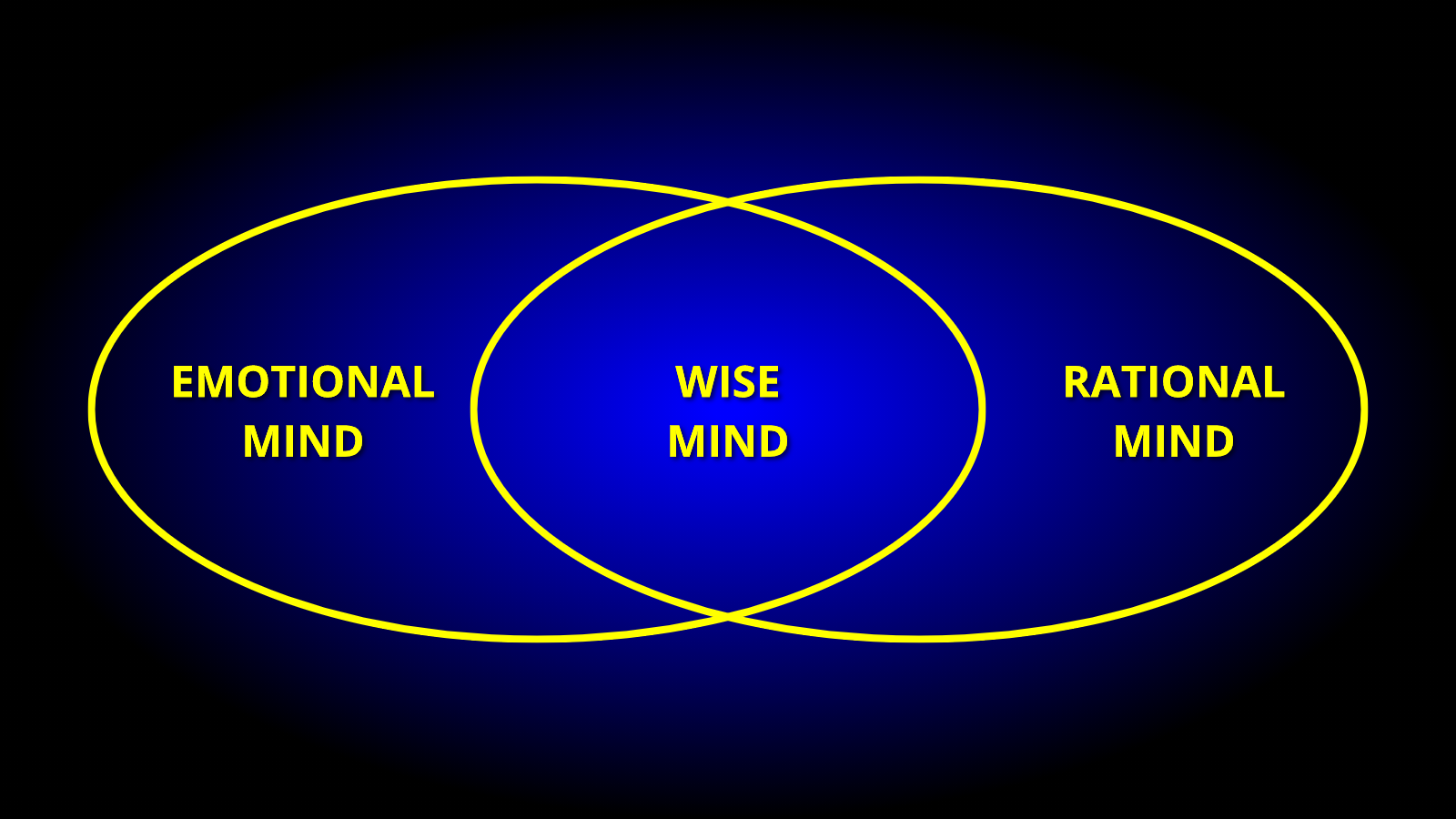One of the skills we develop in the practice of mindfulness is the skill of acceptance. Acceptance allows us to experience emotions without feeling obligated to react to them. This is done by noting the emotion, and then letting go of the negative thought processes that the emotion generates.
We can benefit from mindfulness by learning to accept the flood of emotions that blocks rational thought. The goal of acceptance isn’t to become a totally rational person, devoid of emotion. Instead, the goal is to practice Wise Mind.
Wise Mind is the balance of emotional mind and rational mind, in perfect harmony.
To illustrate this concept, let’s suppose that a destitute woman has been arrested for stealing a loaf of bread with which to feed her hungry children. If we approach this situation from Rational Mind, we are only using logic and reason. There is no emotional content to our approach to the situation in Rational Mind. In this situation, Rational Mind would say that she broke the law, and there are penalties for breaking the law, therefore she should be punished.
Wise Mind, on the other hand, would allow logic and reason to be tempered with emotion. In this case, Wise Mind would allow some sense of compassion for the mother and her plight. While the woman in this scenario may have broken the law, she did so because she had love for her children and did not wish to see them go hungry. Wise Mind would recognize this and allow for some leniency.
On the other hand, what does Emotional Mind look like?
I’m sure we all know of someone who is subject to wild mood swings. Such a person is ruled by emotions that often run out of control. Imagine that this person is cut off in traffic. They may become very angry and chase down the offender, horn blaring and lights flashing. Perhaps this person even tries to run the offender off of the road.
In such a case, this person is being ruled by Emotional Mind. If this person could learn to live in Wise Mind, then he would realize that while the person who had cut him off in traffic had done something dangerous, it may not have been intentional. It could be that this person was distracted. Even if the person had done it intentionally, there is no need to increase the danger to himself by provoking further confrontation in an episode of road rage.
In this case, Wise Mind would accept the fact that such events are inevitable on a busy highway. Emotional Mind would then be tempered with Rational Mind, achieving the balance that is the goal of Wise Mind.
According to Follette, et al (2006), “”Wise mind is understood as a balance (or dialectic) between emotion mind and reasonable mind, where both emotion and reason are considered before taking action in life.”
This concept is often illustrated as below, where Wise Mind is the overlapping area between Rational Mind and Emotional Mind:

In the clinical practice of Mindfulness, clients are taught the concepts of Rational Mind, Emotional Mind, and Wise Mind, and how to differentiate among these states.
Each state has its own usefulness; for example, Rational Mind might be good for solving math problems like balancing a checkbook, while Emotional Mind might be good for a romantic interlude. But there are also situations, such as those outlined above in which one mode of mind might not be as productive as another. In those cases, Rational Mind can be tempered with compassion from Emotional Mind, or Emotional Mind can be balanced with reason.
When using Mindfulness in clinical practice, it is helpful to teach clients the concepts of Rational Mind, Emotional Mind, and Wise Mind, then have them list examples of each in order to gain practice in differentiating among these states.
Follette, Victoria & Palm Reed, Kathleen & Pearson, Adria. (2006). Mindfulness and Trauma: Implications for Treatment. Journal of Rational-Emotive and Cognitive-Behavior Therapy. 24. 45-61. 10.1007/s10942-006-0025-2.

